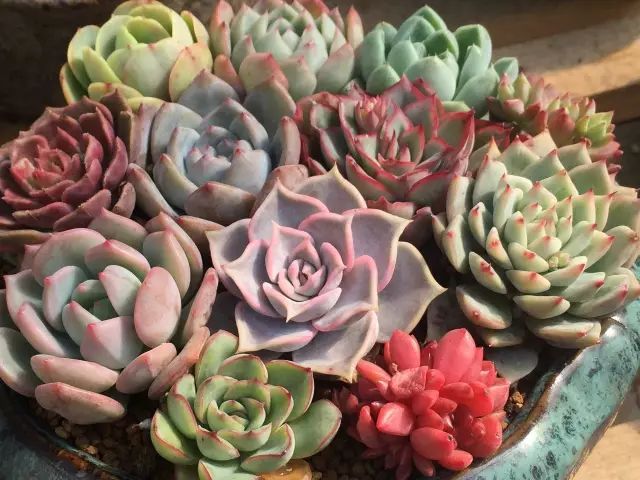The beauty of the plant world-- the fresh and elegant Cymbidium

Brain hands-on
Listen to the sound of the night with you!
Attention
The orchid is a rare and precious flower in China, and its flowers are extremely delicate and beautiful; the stamens are sky blue, but the calyx around the stamens is bright orange, and the package at the bottom is blue-green with purple lace.
The whole flower blooms in the full-bodied green leaves, which looks like a crane with its head held high. In addition, the plant is also very chic, just like a bird spreading its wings, which looks extremely clear and elegant, so the ornamental value is very high.
The orchid generally blossoms in autumn and winter, and the flowering period can be as long as 100 days. Even if there is no flowering, the broad oil-green leaves of the orchid also have a good ornamental value.
one
Soil
Planting orchid requires sandy soil rich in humus, or a mixture of coarse sand, rotten leaves, peat and garden soil.
two
Watering
Appropriate amount of water should be mastered in water management, and the amount of watering should be determined by seasonal changes, plant growth status and the actual degree of soil dryness and humidity. Generally speaking, watering should be dry and wet, summer watering should be adequate, and spring and summer seasons should often spray water on the leaves. If you have air-conditioning or floor heating in winter, you should also often spray water to the leaves.
three
Temperature
The orchid likes to be warm and afraid of the cold. The suitable temperature during the growing period is 20-28 ℃. It can be cultivated in open field in the south of China and in greenhouse in the north of the Yangtze River basin.
four
Light
Magnolia should be given sufficient light in winter, spring and autumn. If the light is not enough, the plant will grow weakly and blossom poorly or not. Summer needs to pay attention to shade, it is best to put in the shade shed or tree shade training, can also be put indoor ventilation and bright scattered light maintenance.
five
Pest control
The magnolia is prone to the harm of scale insects, which can be removed manually after discovery. The high temperature in summer is the active period of scale insects. 800 times liquid of imidophos can be sprayed once a week to control the disease.
six
Reproduction
Magnolia paniculata was propagated by split-plant method. Hide after the flower fade in spring, combined with changing pots to split, the mother plant can only be divided when it has more than 5-6 buds.
Pour the mother plant from the flowerpot, cut off the rhizome of the new plant selected from the rhizome of the mother plant with a sharp knife, and then slowly break the root system by hand. Be careful when dividing plants to avoid breaking the roots and damaging the roots. The new plant separated from the mother plant must have 2-3 buds with certain fibrous roots, apply fresh charcoal powder or plant ash to the wound to prevent the wound from rotting, and then plant it in a pot. After planting, leave it in the shade without watering.
Such fresh and elegant crane orchid, evergreen leaves, whether it is decorated at home living room or office conference hall and other places, are full of love.
Flower words: no matter when, no matter where, never forget that the one you love is waiting for you
Everything is wonderful, there is a praise mall in the flower school.
There are flowers and love, a school of flowers
- Prev

Come and take a seat or two words to teach you to deal with the autumn tiger easily.
The brain starts to listen to the sound of the night with you! Pay attention to autumn, quietly approaching, but also to buy succulent, and succulent become beautiful time, but! The afterpower of the autumn tiger continues, an accidental, succulent plant may even die more than in summer.
- Next

Don't look back, don't stay, move on.
The brain starts to listen to the sound of the night with you! Follow 1 often have friends to ask me, separated people, will come back? In fact, people who ask this question have a clear answer in their hearts, but they are just unwilling to face it squarely. It's like something you like very much.
Related
- Wuhan Hospital Iron Tree Blooming Result Was Instantly Frightened by the Gardener Master
- Which variety of camellia is the most fragrant and best? Which one do you like best?
- What is the small blue coat, the breeding methods and matters needing attention of the succulent plant
- Dormancy time and maintenance management of succulent plants during dormancy
- Minas succulent how to raise, Minas succulent plant pictures
- What are the varieties of winter succulent plants
- How to raise succulent plants in twelve rolls? let's take a look at some experience of breeding twelve rolls.
- Attention should be paid to water control for succulent plants during dormant period (winter and summer)
- Watering experience of twelve rolls of succulent plants
- Techniques for fertilizing succulent plants. An article will let you know how to fertilize succulent plants.

